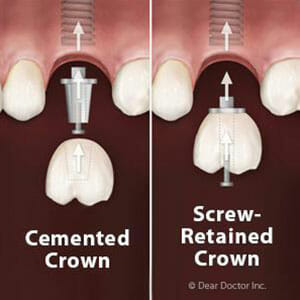The most common dental implant prosthetic complication is abutment-screw loosening. Studies show the majority of abutment screw loosening occurs in the single implant crown in the maxillary and mandibular molar regions. Loose abutment screws can lead to complications of screw fracture, implant fracture, crestal bone loss, and implant failure.
Initially, one must determine if the mobility of the prosthesis is a result of abutment screw loosening or if the implant body is mobile. Usually a mobile implant can be determined by the presence of symptoms and radiographic evidence, and requires immediate extraction.
Some of the causes of abutment screw loosening are:
- Cantilevers
- Inadequate torque
- Poor implant position
- Abutment not fully seated
- Occlusal trauma and bruxism
- Increased crown height – implant ratio
- Non-passive prosthetic framework
Some preventive measures to prevent screw loosening include:
- Prevent cantilevers
- Narrow occlusal table
- Occlusal contacts in fossa, avoid marginal ridges
- Decrease cusp height
- Adequate interproximal contacts
- No lateral forces
- Increase abutment diameter
- Night guard
- Check occlusion at maintenance/recare appointments
The ideal torque technique is to preload the screw with finger tightening with an implant driver (10-20 N/cm). Then the screw should be torqued to the manufacturer’s specifications (ranges from 15 -35 N/cm). Finally, after 5-10 minutes, the screw should be re-torqued to the manufacturer’s specifications.


 Dr. Sakamoto
Dr. Sakamoto
 Dr. Mannava
Dr. Mannava
 Our Team
Our Team
 FIRST VISIT
FIRST VISIT
 PATIENT FORMS
PATIENT FORMS
 DENTAL INSURANCE
DENTAL INSURANCE
 POST-OP INSTRUCTIONS
POST-OP INSTRUCTIONS





